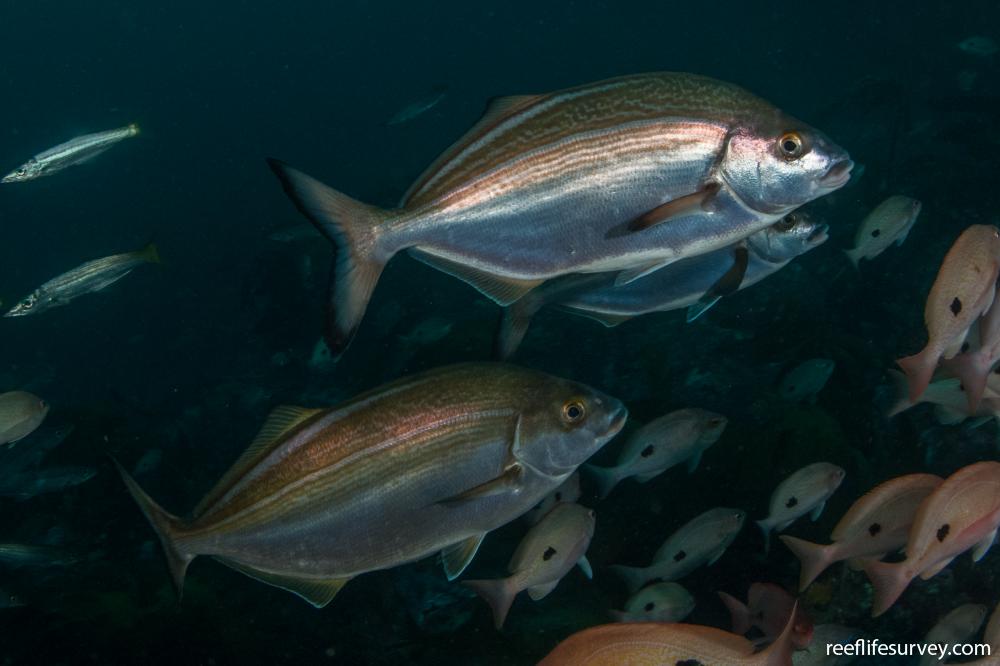Latridopsis forsteri
Bastard trumpeterSimilar Species
Same Genus
Distribution
Temperate Australasia
Description
Perch-like shape and bronze colouration in the upper half of the body. It is the only trumpeter commonly seen by divers, and is also frequently caught by fishers in Tasmania using gillnets. Small juveniles are commonly referred to as paper fish, because of an extremely thin and semitransparent body. They settle from the plankton on reefs in large numbers at intervals of several years, with overall population numbers declining steeply in recent decades.
Information
Max Size: 65 cm
Sea Temperature Range: 10.2-22.3°C
Depth: 0-60m
Habitat Generalization Index: 6.9
Also referred to as the SGI (Species Generalisation Index), this describes the habitat niche breadth of the species. Species with values less than 15 are found in a relatively narrow range of reef habitat types (specialists), while those over 25 may be found on most hard substrates within their range (generalists). Learn more here.
Conservation and Rarity
IUCN Status: Not Evaluated
Occurrence: Common (25.7% of sites)
Occurrence describes how often the species is found on surveys within its distribution. It is calculated as the % of reef sites surveyed by RLS divers across all the ecoregions in which the species has been observed
Abundance: Few (4 per transect)
Abundance is calculated as the average number of individuals recorded per RLS transect, where present.
Edit by: GJ Edgar. 2008. Australian Marine Life. New Holland, Sydney







